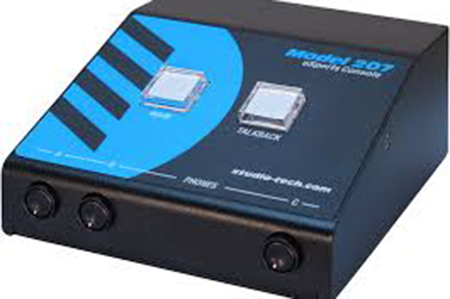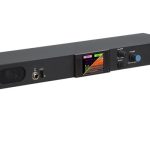Studio Technologies' Model 207 eSports Console offers a combination of analog and digital audio resources specifically intended to support eSports-related live event, entertainment, and streaming broadcast applications.

US-based audio, video, and fibre-optic solutions manufacturer, Studio Technologies has unveiled the Model 207 eSports Console, a new control hub for eSports applications.
The Model 207 eSports Console offers a unique combination of analog and digital audio resources specifically intended to support eSports-related live event, entertainment, and streaming broadcast applications.
Optimized for audio monitoring, the Model 207 is built to address microphone and interfacing requirements of eSports players and personnel. The unit enclosed in a compact, rugged steel enclosure intended for table-top use made its debut at the recent NAB show.
It incorporates both analog and Dante® audio-over-Ethernet technology to allow direct integration with personal computers and Ethernet-based audio networks.
As the popularity of eSports has continued to grow, so has the expectations for the technology used by the competitors and event personnel. We saw a trend in customers using our existing products for broadcast and streaming eSports applications. The results were adequate but not optimal, which led us to explore the field. We designed the Model 207 expressly to support the needs of these emerging applications, said Gordon Kapes, President of Studio Technologies.
Integrating the Model 207 into applications requires only a few standard connections. By providing both a 5-pin female XLR and a 3.5mm 4-conductor TRRS jack, a wide range of headsets can be connected. The XLR connector supports traditional headsets that are commonly used with intercom systems. The units 3.5mm TRRS jack allows direct interconnection with low-cost stereo gaming headsets, frequently used in gaming applications and can offer seamless performance as well as meeting the needs of player sponsorship.
The Model 207s high-quality microphone preamplifier and associated dynamics control circuit ensure optimal audio performance. The microphone audio signal is converted to 24-bit, 48kHz sample rate digital audio. Following the state of the front-panel pushbutton switches, the microphone audio is routed to two Dante transmitter (output) channels. For user confidence, an integrated sidetone function is provided.
Model 207 provides a 2-channel stereo line input that is directly compatible with the analog outputs provided by personal computers. A simple audio patch cord is all that is required to connect with the units 3.5mm 3-conductor (TRS) input jack. The stereo line-input signal is converted to digital and output by way of two Dante transmitter (output) channels.
Obtaining the desired headphone monitor functionality can be easily accomplished. The possible listen audio sources include four Dante receiver (input) channels, the stereo line input, and microphone audio for sidetone. Three rotary level controls allow users to create their desired headphone mix. A Power-over-Ethernet (PoE) connection supplies both operating power and data transport.
An extensive range of Model 207 functions can be configured using Studio Technologies STcontroller software application. Selectable parameters include microphone preamplifier game, electret power on/off, stereo line input gain, headphone monitoring, pushbutton action, and overall system operation.

















































































